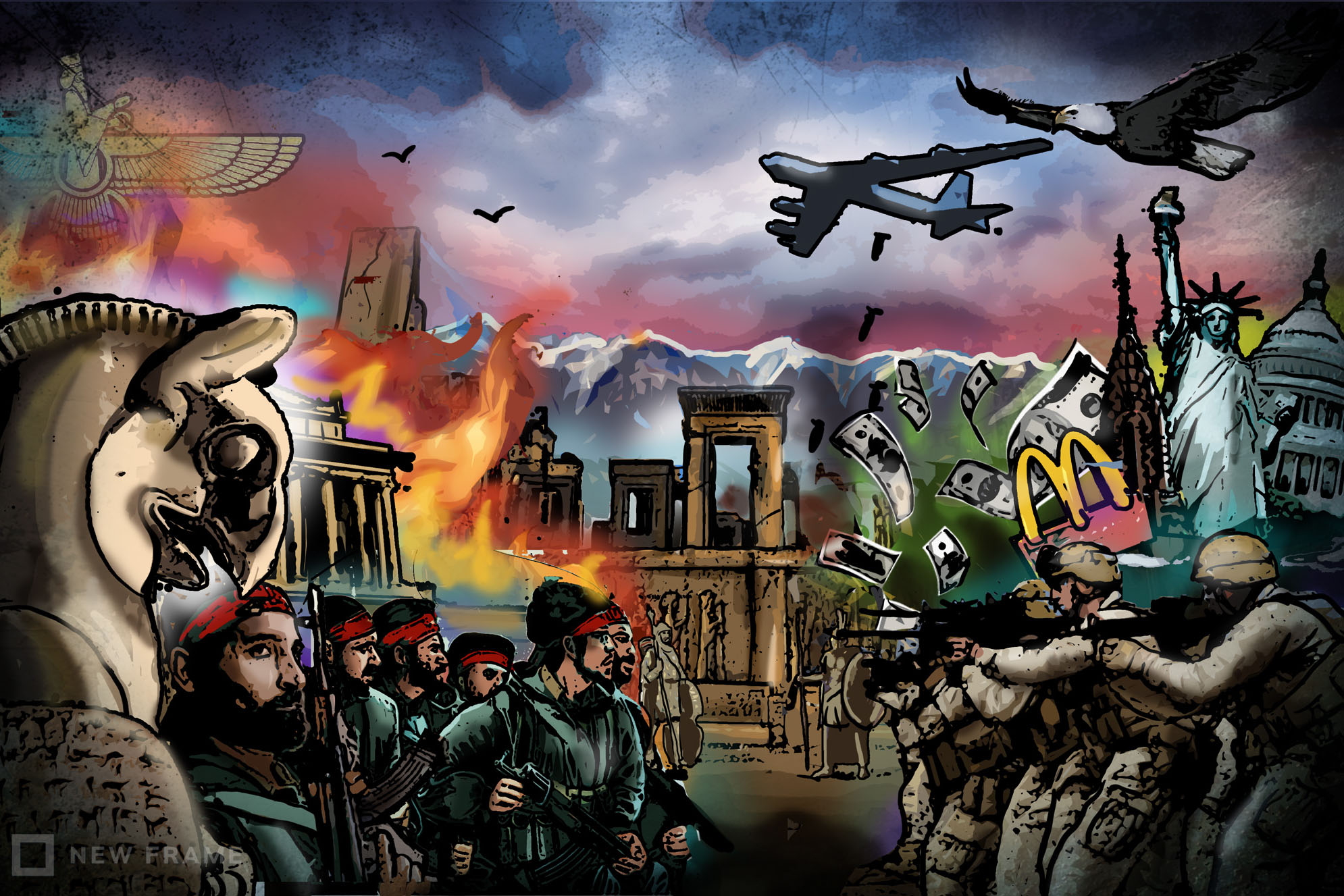Text Messages | History repeats itself in Iran
Alexander the Great retaliated for the fall of the Acropolis by destroying the palace complex of Persepolis. Trump appears to want to emulate such large-scale destruction in Iran.
Author:
27 June 2019

It was the largest army of invasion ever assembled. An amphibious expeditionary force aiming to seize and occupy and conquer. Spies for the land about to be attacked had followed the enemy’s progress and reported that at an early stage of gathering there were 1.7 million in its ranks. Alongside the infantry and mobile troops was a mighty array of long-range weaponry and ships.
Such details might suggest that these were the forces commissioned and assembled for World War II’s Operation Overlord, the Allied invasion of Normandy on 6 June 1944. But the expedition was at the command of Xerxes, king of Persia, the so-called King of Kings, ruler of the first world empire that stretched from India to North Africa, across modern-day Turkey, Iraq, central Asia and Iran (Persia).
Xerxes’ army has subsequently been renumbered, with many historians agreeing that it was more likely to have been made up of around 250 000 troops (The Cambridge Ancient History of 1988, for instance, gives 242 000). Even that number is still sizeable given the small numbers of Hellenes (“Greeks”) facing the Persians. At the strategically vital point of Thermopylae, for example, the narrow pass was held by about 300 Spartans, 700 Thebans and 1 500 helots or slaves to the Spartans.
Whatever the reported, imagined or actual numbers of the Persian host, it was made up of specialised troops from across the empire. In that, it was the embodiment of the geographical, administrative, civilisational and cultural reach of Persia. And yet the alliance of small, fractious city states of Hellas (Greece) ultimately turned back the invasion, winning victories on land and sea.
But that was not before Athens had been evacuated and the Acropolis stormed by the Persians. The troops guarding Athens’ trove of memory and history either threw themselves off the hill or sought sanctuary in the temple of Athene, where they were put to the sword. Then the Acropolis was laid waste, its shrines and statues toppled, its buildings burnt.
It was for this desecration and destruction that about a century and a half later, Alexander the Great (though of course much debate extends over that appellation of “Great”) set fire to the centre of Persian imperial power, administration and ceremony, the great palace complex of Persepolis. Acts of vandalism do not cancel each other out and the loss of Persepolis was every bit as horrendous and indefensible as that of the Acropolis. The difference, though, is that the Athenians rebuilt the Acropolis; to this day, Persepolis remains much as it was after the flames went out on that night.
Threat of ‘obliteration’
Alexander is said to have died on 10 or 11 June 323 BCE, so 2 342 years ago this month. With him died his vision of a unified geographical and cultural entity, made up of Macedonians and Persians and all the other peoples of the vast land mass he conquered (slaughtered, enslaved and reduced, in others’ eyes). This is very much a pro-Alexander viewpoint.
On the other side of the scale is that, to this day, Alexander is spoken and sung of as the devil in Kurdish territories, Iran itself, Afghanistan (Kandahar derives from Sikhander, the local rendering of Alexander) and Pakistan (the Swat Valley was among his captured territories). Empire – whether Alexander’s, the Persians’ or the “hidden” United States empire of today – is a reality pleasing only to the colonising force.
In the fraught atmosphere of Iran-US relations, with tensions rising in the Persian Gulf and the Strait of Hormuz, there is the probability of the world’s first empire (Persia, today’s Iran) being attacked by the world’s last empire (the US). Perhaps “attacked” is too neutral a word: US President Donald Trump has threatened Iran with “obliteration”. The scenario is awful: an ancient culture and civilisation being attacked by a degraded society driven by patriarchy, machismo, money, racism and Twitter storms.
Given the barbarity of the US army’s treatment of the site of the ancient city of Babylon during the US war on Iraq, Iranians, archaeologists, historians, the United Nations Educational, Scientific and Cultural Organisation and many so-called ordinary people the world over must be fearing the prospect of “collateral damage” in any US air strikes on Iran. Persepolis would be a target of such emotional weight that its bombing or destruction would be a hammer blow to the hearts and minds of Iranians and others who value civilisation, ideas and ideals.
American animus towards Iran is much analysed, as is Iranian suspicion and scepticism of the US. But the first, low blow in modern time was landed by the US, which deposed a democratically elected Iranian leader, Mohammad Mosaddeq, in 1953. Why? Mosaddeq wanted to nationalise an Iranian resource: oil. The coup d’état was the creature of the US Central Intelligence Agency (CIA) and the United Kingdom’s intelligence agency, MI6.
What Iran-US history – and current policy on both sides – needs is a mind as complex and sentient as that of Herodotus. The opening line of The Histories is among the most famous of all beginnings.
“Herodotus of Halicarnassus, his Researches are here set down to preserve the memory of the past by putting on record the astonishing achievements both of our own [Hellene] and of other peoples [Persian]; and more particularly, to show how they came into conflict.”
(From the celebrated 1954 translation by Aubrey de Selincourt.)
